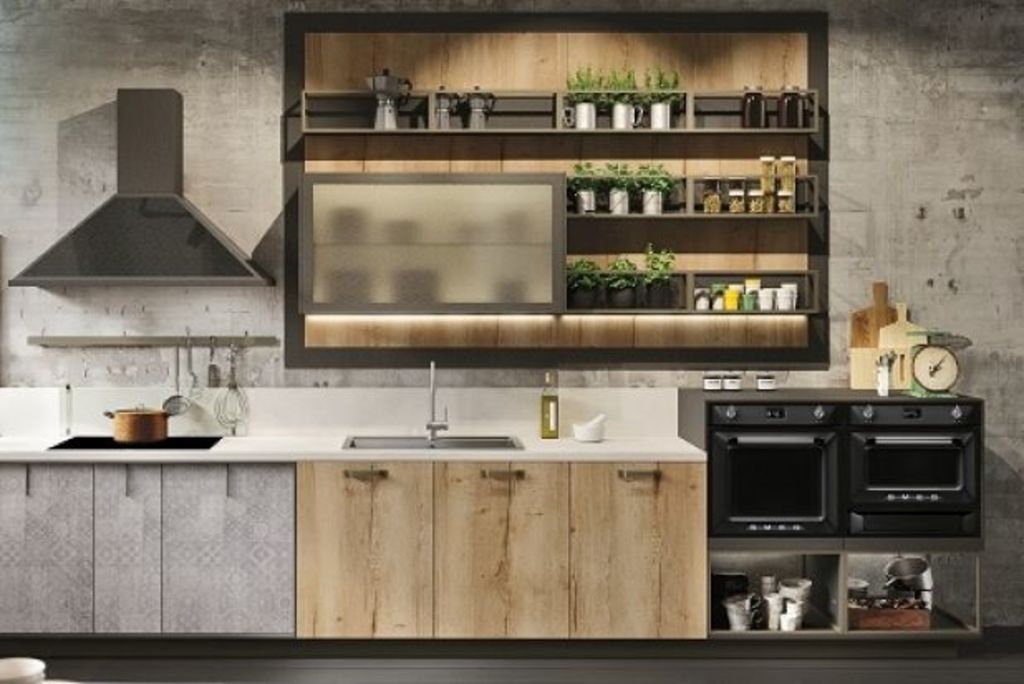How a benchtop can transform your kitchen

Want a new kitchen but don’t want to spend money on an entirely new one? A new benchtop could be all you need.
If there’s one thing that makes a massive difference in a kitchen, it’s the benchtop; the result in most cases is far greater than changes to the cabinetry, splashback or appliances.
The main options when putting in a new benchtop are laminate and stone. There are alternatives such as timber, or even resurfacing the existing benchtop, but I am not a great fan of these as I will soon explain.
While stone is the most impressive looking, it isn’t suitable for all circumstances. If the rest of the kitchen is unimpressive, then a stone benchtop is probably not the way to go. In fact, the cost of a stone benchtop could be almost the equivalent of a brand new, cheapish complete (DIY) kitchen.
In the case of the kitchen below, a stone benchtop was the right answer. The only thing I recommended my client change in this kitchen was the benchtop – nothing else was touched. Of course they could have replaced the splashback and even the cupboards, drawer fronts, end panels and kick-strips, but when budget is an issue it’s great to know one key thing can make such a difference.

Before: Kitchen benchtop in Bli Bli. Photo: Supplied
When considering stone it’s important to shop around. I had a client who was quoted $15,000 for her kitchen benchtops. I immediately put her on to my preferred stone benchtop supplier in South East Queensland and the quote came in at $7000 for the exact same thing – less than half the price.
Stone overlay is another option. This is where a thin layer (approx 6-7mm) of stone, granite or quartz is laid over your existing benchtop, eliminating the need for any demolition. This can be a good option, but it’s definitely worth comparing pricing with an all-new stone top and its associated costs. In my experience, the cost difference has been minimal.
A laminate benchtop can be an excellent option for lower valued properties (less than $600,000) or those kitchens which are fairly basic or not ideal. I prefer a square edge laminate benchtop because it has a more contemporary feel than a bullnose edge. These days you can get all sorts of laminates – many that really do look like stone which can be a great middle-of-the-road option. Products such as DiamondGloss by Laminex are usually around 50 per cent cheaper than a standard stone finish.

After: New benchtop transforms Bli Bli kitchen. Photo: Supplied
The other options are timber and resurfacing. While timber may look great it’s not a long lasting, smart choice for a kitchen benchtop. Though timber is supposed to be “self cleaning”, I’m not sure how hygienic and nice looking it would be after years of use.
Resurfacing is the painting of a benchtop using a specially formulated roll-on product. I know other renovation experts do recommend it, but I think it looks cheap and nasty. The only type of property I would consider using this on is one in the below $300,000 price range that you were planning to sell immediately afterwards (and even then I am questioning myself as I write this).
Be aware when replacing a benchtop, you will always have knock-on issues. These will relate to the plumbing, splashback and adjacent wall finishes and will inevitably add to the cost. Like any renovation, sometimes replacing your benchtop can open a can of worms, so do your homework before committing to anything.
Jane Eyles-Bennett is renovation mad and has been a professional designer for 23 years. She was a renovation designer on the TV series Property Climbers, winner of several interior design awards and design consultant to over 600 property owners in the past nine years.
Have a renovation or design topic idea? Contact Jane at jane@hotspaceconsultants.com or via her website.
We recommend
We thought you might like
States
Capital Cities
Capital Cities - Rentals
Popular Areas
Allhomes
More







